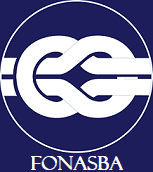Curacao Bullenbaai Terminal
A description of the Bullenbaai Terminal is contained in the current edition of the "Ports of Curacao--Directory of Information" published by the Curacao Ports Authority, to which reference should be made.
1. PRE-ARRIVAL INFORMATION
Prior to arrival at the Bullenbaai Terminal, the master shall send the completed "PRE-ARRIVAL QUESTIONNAIRE" to the Refinery or Terminal via his agent.
2. PILOT STATION
Pilotage is compulsory and rendered day and night. Pilots are supplied from Willemstad.
For the Bullenbaai Terminal, the pilot boards 1/2 mile S of Kaap Sint Marie.
Vessels awaiting the pilot should not approach the pilot station until contact has been made with the pilot by VHF.
Defects of engines, steering gear, anchor gear and other defects which influence maneuvering abilities of the vessel must be reported to the harbour master before entering.
In the vicinity of Curacao, the currents are generally W - going and set strongly round the points. Along the SW coast the current may attain rates from 2 to 3 knots. A weaker current may occasionally set E against the prevailing wind.
At certain times of the year, a strong current can be expected setting towards Kaap Sint Marie and a counter current in Bullenbaai.
3. COMMUNICATIONS
For the Bullenbaai Terminal vessels should call in on VHF Channel 11 "Bullenbaai Terminal" for exchanging pre-arrival questionnaire information and berthing time, thereafter, the vessel should report in on VHF Channel 12 to "Fort Nassau Traffic Control."
Vessels awaiting berth should listen in on VHF Channel 11.The working channel for the pilots is VHF Channel 9.
Once alongside, the Refinery or Terminal representative on duty can be contacted on VHF Channel 11 or Telephone #466-5231 or 466-5232 at Bullenbaai
4. MINIMUM ENTERING/SAILING DRAUGHTS FOR VESSELS IN BALLAST
Any deviation from the above minimum draught regulations to be approved by the harbour authorities via the agent.The harbour regulations concerning draughts mentions that vessels, in the ballast condition, not to be trimmed more than 0.61 metres/2 feet by the bow or more than 3.05 metres/10 feet by the stern.
BULLENBAAI TERMINAL (ENTERING)
GROSS REGISTERED |
FORE |
AFT |
||
TONS |
METRES |
FEET |
METRES |
FEET |
Below 11000 |
3.05 |
10 |
4.88 |
16 |
11000 – 15000 |
3.35 |
11 |
5.49 |
18 |
15000 – 19000 |
3.66 |
12 |
5.79 |
19 |
19000 – 25000 |
3.96 |
13 |
6.10 |
20 |
25000 – 29000 |
3.96 |
13 |
6.40 |
21 |
29000 – 35000 |
3.96 |
13 |
6.71 |
22 |
35000 – 40000 |
3.96 |
13 |
7.01 |
23 |
40000 – 45000 |
4.27 |
14 |
7.32 |
24 |
45000 - 50000 |
4.57 |
15 |
7.62 |
25 |
50000 - 55000 |
4.57 |
15 |
7.92 |
26 |
55000 – 60000 |
4.88 |
16 |
8.23 |
27 |
60000 – 65000 |
4.88 |
16 |
8.53 |
28 |
65000 – 70000 |
5.18 |
17 |
8.84 |
29 |
70000 – 75000 |
5.49 |
18 |
8.84 |
29 |
75000 – 80000 |
5.49 |
18 |
9.14 |
30 |
80000 – 90000 |
5.79 |
19 |
9.45 |
31 |
90000 - 100000 |
5.79 |
19 |
9.75 |
32 |
Above 100000 |
6.10 |
20 |
10.36 |
34 |
For departing vessels, the master is to decide on minimum draughts subject to pilot being able to safely disembark.
The harbour regulations concerning draughts mentions that vessels, in the ballast condition, not to be trimmed more than 0.61 metres/ 2 feet by the bow or more than 3.05 metres/10 feet by the stern./
5. JETTY PARTICULARS
BULLENBAAI TERMINAL
|
Vessels berth portside alongside.
6. MINIMUM MOORINGS
BULLENBAAI TERMINAL
Vessels of DWT 50,000 m.t. and above are to have a minimum number of mooring lines of 3.2.2 both forward and aft.
Vessels of DWT 49,999 m.t. and below are to have a minimum number of mooring lines of 2.2.2 both forward.
PART B (FIRE AND SAFETY REGULATIONS)
1. FIRE ASHORE OR ON BOARD ANOTHER VESSEL
-
Await instructions from the loading department.
2. FIRE ON BOARD OR IN THE VICINITY
-
Sound a succession of blasts on the ship's whistle.
-
Contact the loading department by telephone or VHF channel "19" Emmastad and VHF channel "11 Bullenbaai.
-
Stop all operations in cooperation with the loading department and close all manifold valves.
-
Fight fire and prevent fire spreading.
-
Bring engines to stand-by and prepare ship for departure.
-
Disconnect hoses or arms.
-
Generally the refinery fire brigade and a senior member of our refinery staff will be at the scene andwill assist vessel in combating the fire.
-
The shore may not be held liable for any damages arising from assistance given to vessels.
3. STATE OF READINESS OF VESSELS ALONGSIDE
-
Immobilizations of engines and/or repairs are not permitted unless agreed by the loading department in writing.
-
The following fire fighting precautions must be taken:
a) At least two fire hoses, fitted with jet/fog nozzles, to be run out and ready for use;
b) Fire mains must be under pressure;
c) An international shore connection shall be available on the vessel's fire main near the gangway;
d) Dry chemical extinguishing equipment of minimum 20 Kg capacity must be stationed at the ship's manifold.
4. SMOKING REGULATIONS
-
On shore, smoking is strictly prohibited on jetties or refinery/terminal areas.
-
On vessels, smoking is strictly prohibited except in two or maximum three approved places.
-
For approved places, see the "notes of guidance on the selection of approved places" shown on the back of the Refineria Isla (Curazao) S.A. smoking notices.
-
Smoking on board of your vessel is only allowed in the following places:
a. _____________________
b. _____________________
c. _____________________
5. POLLUTION
-
Any air and/or water pollution is prohibited (harbour regulations).
-
Any leakage or spillage has to be reported immediately to the loading department.
6. SMALL CRAFT ALONGSIDE
-
Small craft and barges are not allowed alongside the vessel during cargo, ballast, gas freeing or tank cleaning operations unless authorized by the loading department and agreed by the master
-
Lifeboats may not be swung out, unless agreed to by the loading department.
-
Lifeboats may not be launched, unless agreed to by the loading department and permission given by Fort Nassau Traffic Control.
7. SHIP'S STORES
(a) EMMASTAD REFINERY
-
Storing may only take place before or after cargo, ballast, gas freeing or tank cleaning operations. The only exceptions are when vessel is closed loading or discharging with the cargo tanks in the inert condition and vessel is using a hydraulic crane, or, when vessel is handling asphalt and luboils only cargoes.
-
Vessel may not use the crane or derrick if it crosses the loading arms or loading hoses.
-
When using a dumb barge the loading of stores should be done in the poop area, if the vessel has a stores crane aft, and not the midships cargo deck area. Stores shall not be handled in the cargo deck area when loading asphalt.
-
Storing by hand is allowed at all times.
(b) BULLENBAAI TERMINAL
-
Stores may be loaded on board, using the jetty crane, when the vessel is carrying out cargo or cargo tank ballast operations in the closed mode and tanks are in the inert condition.
-
When using a dumb barge, the loading of stores should be done in the poop area, if the vessel has a stores crane aft, and not the midships cargo deck are.
-
Storing by hand is allowed at all times.
8. PORTABLE TELEPHONES
Persons carrying portable telephones must switch these off when not in a vehicle and transiting the refinery/terminal areas and jetties or outside the accommodation area on board the vessel.
9. EMERGENCY SHUTDOWN
-
If the vessel is loading and it is necessary to manually initiate an emergency shut down the jetty system will be used.
-
If the vessel is discharging the vessel's system must be used. This in order to protect hoses and arms from unnecessary stresses/surges that could rupture them and thus worsen any emergency.
THE VESSEL MUST NOT SHUTDOWN AGAINST THE SHORE AT ANY TIME
10. VESSEL'S FITTED WITH AN INERT GAS SYSTEM
-
All crude and product carriers of DWT 20,000 m.t. and above must be inerted for all grades except asphalt and luboils.
-
All product tankers between DWT 10,000 and 19,999 m.t. must be inerted for all grades with a flashpoint of 60 degrees Celsius and below.
-
For vessels loading, non gasfree cargo tanks may not be inerted alongside. Gasfree cargo tanks may be inerted, but not concurrent with cargo loading.
-
For vessels discharging, headspaces may not be inerted alongside.
11. FLEXIBLE “U” BENDS
- Vessels may not use flexible hoses to bridge cargo manifold connections with the exception of vessels loading luboils or discharging chemicals.
NOTHING IN THESE INSTRUCTIONS WILL RELIEVE MASTERS OF THEIR RESPONSIBILITIES IN OBSERVING THE NORMAL SAFETY, FIRE PREVENTION, AND SECURITY REGULATIONS.







